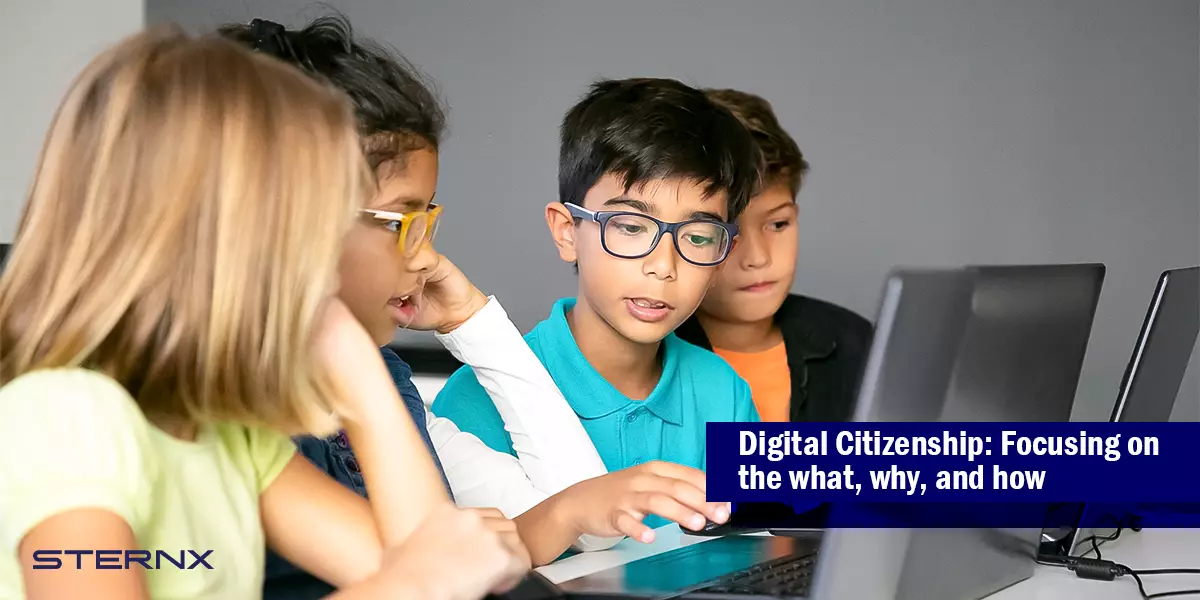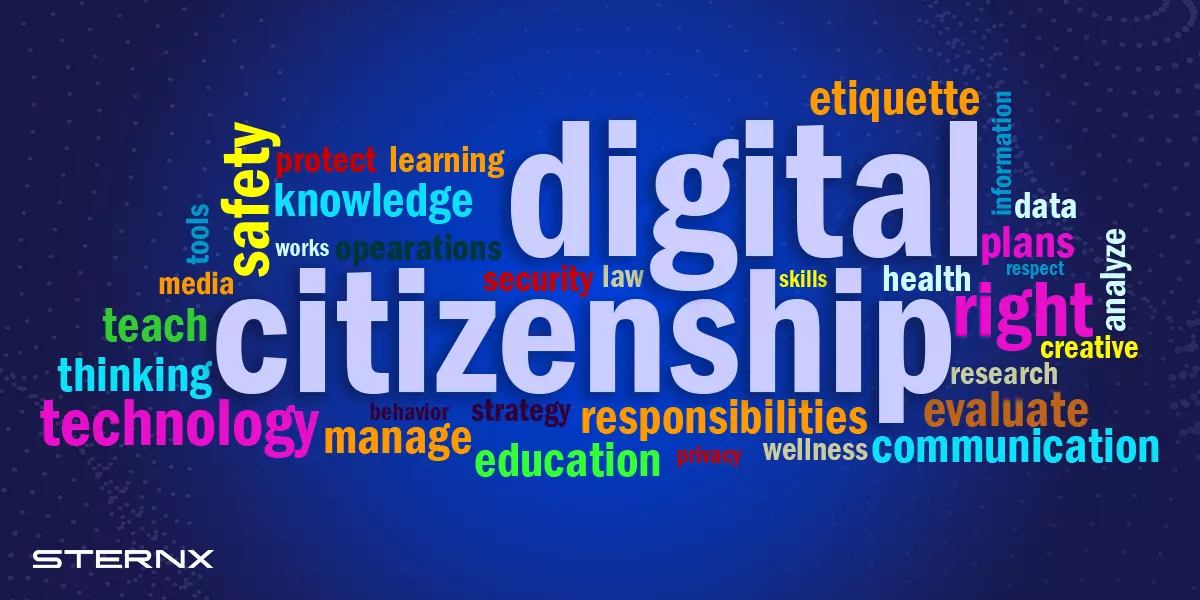As the internet and social media become increasingly ingrained in children’s daily lives, teaching them how to be good digital citizens is more crucial than ever. Digital citizenship refers to the responsible and ethical use of technology and online spaces. With children gaining access to the digital world at younger and younger ages, parents and teachers need to work together to instill positive online behaviors and help kids safely navigate potential risks. By creating a comprehensive digital citizenship curriculum and teaching digital citizenship in the classroom, we can empower children to become safe, responsible, and respectful digital citizens.
Table of Contents
ToggleThe Growing Need for Digital Citizenship
The internet provides amazing opportunities for learning, creativity, and connection. However, it also comes with risks like cyberbullying, exposure to inappropriate content, and loss of privacy. According to common sense education and a study by Maryville University, over a third of tweens and teens have been cyberbullied. This demonstrates the need for digital citizenship education to teach kids how to avoid and respond to cyberbullying. Additionally, 70% of teens feel pressure to only post content that makes them look good to others, indicating a need for teaching social media responsibility and lessons on managing social media image and anxiety. Teaching digital citizenship for students helps reap the rewards of technology while avoiding pitfalls. It equips them with the values, knowledge, and skills to use technology in positive ways.
Some key reasons digital citizenship education is critical:
- It promotes online safety by teaching kids how to protect private information and avoid scams, predators, explicit content, and cyberbullying. Cybersecurity and privacy should be key focuses.
- It reduces the actual occurrence of cyberbullying by empowering kids to stand up to hate speech and cruelty online. In-depth lessons on empathy, ethics, and respect are essential.
- It counters internet addiction by encouraging kids to balance screen time with real-world activities. Teaching self-control and moderation in tech usage are important skills.
- It fights misinformation by showing kids how to evaluate information online sources and think critically about what they see on social media. Developing strong media literacy is foundational.
- It fosters digital responsibility by demonstrating how to avoid piracy, plagiarism, and other unethical online behaviors. Ethical tech use must be consistently modeled.
- It expands opportunities by teaching kids how to use technology to create, collaborate, and make a positive difference in the world. Building digital etiquette skills opens doors.
With comprehensive and engaging digital citizenship, teaching digital citizenship and digital etiquette to elementary students can raise kids to be digitally literate, ethical, empowered participants online and in life.

What is Digital Citizenship for Students?
Digital citizenship for students is all about teaching students and equipping them with the skills and knowledge to navigate the online world safely, responsibly, and positively. It’s like giving them a compass and toolkit for their digital adventures!
Here’s how digital citizenship enriches students:
- Safety: Students grasp sophisticated strategies to shield themselves from online hazards such as cyberbullying, scams, and inappropriate content. They adopt robust password practices and exercise mindfulness in sharing personal information.
- Respect: Fostering kindness and constructive online engagement is paramount. This entails steering clear of cyberbullying, being mindful of their digital footprint, and treating others with the same courtesy as they would in face-to-face interactions.
- Responsibility: Understanding the far-reaching consequences of their online actions is important. Students comprehend the ethical implications of copyright infringement and embrace responsible technology usage.
- Literacy: Critical thinking skills are developed for discerning online information with acumen. This enables them to differentiate between objective facts and subjective opinions, sift through credible and dubious sources, and deftly navigate the abundance of data available.
- Digital Identity: Managing their online presence becomes intuitive. Students learn to craft a positive digital footprint, a crucial asset as their online activities become increasingly scrutinized with age.
Developing a Complete Digital Citizenship Curriculum
An effective digital citizenship activities and curriculum equips students with the tools to harness technology for good while minimizing harm. Here are some tips for developing a well-rounded digital citizenship lessons and activities for kids:
Start Early in Elementary School
Digital citizenship education should begin in elementary school or even earlier during the preschool years. Schools should not wait until kids already have developed bad tech habits to try to instill positive online behaviors. These skills and values should be woven into learning objectives starting as early as kindergarten. For instance, young students can be taught to treat others kindly online, just as they would in the classroom.
Scaffold Skills
It’s important to build digital citizenship skills over time, increasing complexity and depth as kids get older. Schools should scaffold instruction so that key concept of citizenship like privacy, safety, digital etiquette, and ethics are revisited across grade levels at deeper levels. For example, introduce basic privacy settings in 3rd grade social media projects, then expand to more advanced privacy controls in middle school tech courses.
Integrate Throughout Disciplines
Lessons should not be siloed or taught in isolation – schools should integrate online ethics and skills into writing, math, science, art, and other disciplines. For instance, analyzing information online and examples of fake news can be an impactful part of a language arts lesson. Discussing ethical tech design relates closely to science and engineering principles. Schools must create concept of citizenship across subjects to cement digital citizenship.
Address All Aspects
A comprehensive digital citizenship curriculum covers digital ethics, safety, security, literacy, digital etiquette, rights, and responsibilities. Schools must go far beyond just teaching basic online safety to fully empower students to be informed, ethical digital creators, collaborators, and civic participants.
Make It Relevant
Lessons need to be centered around the tech, platforms, apps, and services students actually use in their daily lives. Don’t just broadly discuss social media – use relatable examples from popular sites like TikTok, Instagram, and YouTube. Ensure the curriculum feels relevant to students’ lived experiences, interests, and communities.
Encourage Reflection
Educators should build in opportunities for student self-reflection so kids can meaningfully apply digital citizenship skills to their own technology use habits. For example, have students audit their personal screen time, social media behaviors, security practices, and online interactions to gain valuable perspective.
Engage Families
Schools need to actively partner with students’ families to reinforce positive digital citizenship at home. This can be achieved through family newsletters, take-home resources, workshops, and trainings to educate parents on relevant issues like limiting screen time, addressing cyberbullying, fostering kind online communities, guiding children to be upstander, and more.
and more.
Be Interactive
Active, hands-on learning sticks better than lectures. Teachers should teach students and incorporate role playing, student-created media, ethical tech design projects, virtual exchanges, and other interactive activities that get kids engaged and apply their knowledge.
Top Digital Citizenship Education Resources
Many excellent resources exist to support educators in developing curriculum and lessons. Here are some of the top digital citizenship education resources available:
- Common Sense Education: This robust media literacy and digital citizenship program provides a full scope and sequence, detailed lesson plans, learning activities, ready-to-use classroom resources, and assessments across grade levels.
- Google Be Internet Awesome: This highly engaging curriculum includes interactive games, videos, and activities focused on teaching kids digital safety, responsibility, critical thinking, kindness, and inclusiveness online.
- Facebook Digital Literacy Library: This collection of videos, lesson plans, conversation starters, and activities covers media balance, privacy, security, communication, cyberbullying, and more. Content is tailored for different age groups.
- Microsoft Digital Literacy Curriculum: These technology skills lessons feature modules on internet safety, privacy, critical thinking, collaboration, and inclusion. Discussion guides are provided to engage students.
- BrainPOP Digital Citizenship: BrainPOP’s short animated videos introduce key digital citizenship topics in a kid-friendly way. Accompanying quizzes and lesson ideas cover cyberbullying, security, digital footprints, and other topics.
- MediaSmarts: This Canadian non-profit offers an extensive library of lesson plans, student handouts, and tip sheets covering online ethics, privacy, relationships, cyberbullying, sexting, and digital health across grade levels.
By leveraging these engaging, thoughtfully designed resources, educators can build comprehensive and impactful digital citizenship curriculum to empower students to be responsible, literate digital citizens.
